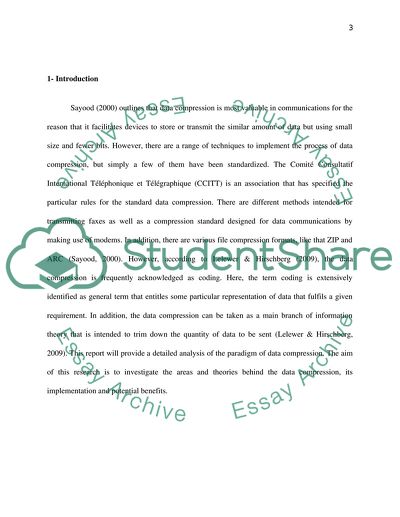Cite this document
(Lossy vs. Lossless Data Compression Assignment Example | Topics and Well Written Essays - 1961 words, n.d.)
Lossy vs. Lossless Data Compression Assignment Example | Topics and Well Written Essays - 1961 words. Retrieved from https://studentshare.org/statistics/1562858-data-compression
Lossy vs. Lossless Data Compression Assignment Example | Topics and Well Written Essays - 1961 words. Retrieved from https://studentshare.org/statistics/1562858-data-compression
(Lossy Vs. Lossless Data Compression Assignment Example | Topics and Well Written Essays - 1961 Words)
Lossy Vs. Lossless Data Compression Assignment Example | Topics and Well Written Essays - 1961 Words. https://studentshare.org/statistics/1562858-data-compression.
Lossy Vs. Lossless Data Compression Assignment Example | Topics and Well Written Essays - 1961 Words. https://studentshare.org/statistics/1562858-data-compression.
“Lossy Vs. Lossless Data Compression Assignment Example | Topics and Well Written Essays - 1961 Words”, n.d. https://studentshare.org/statistics/1562858-data-compression.


